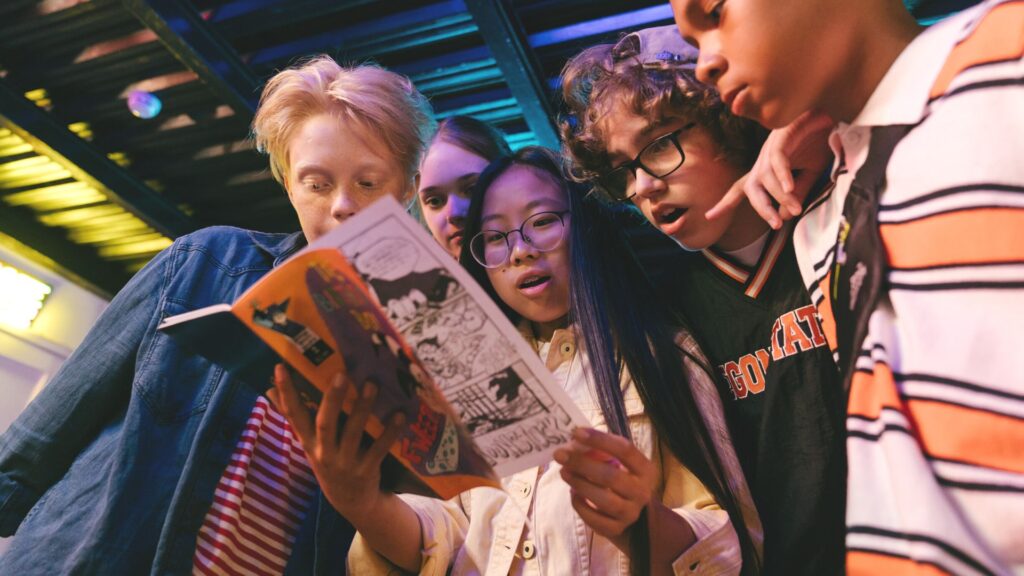How Comic Books Can Strengthen Your Child’s Literacy
Comic books boost reading literacy in young readers with their appealing imagery, dynamic structure, and enticing plots.
A young generation of students are struggling to read. The pandemic greatly exacerbated this problem, and now at least 66% of America’s youth are below proficiency levels. Parents, teachers, and lawmakers are scrambling to come up with new ways to nurture a love for all things reading, but one largely untapped area that may help struggling children is found in comic books.
Comic books have been a popular, yet largely remaining underground, choice of literacy for decades. However, the majority of Americans who read these alternative publications are young adults and older. This is likely due to the longstanding stigma against comics but to the contrary, they often help struggling students better than traditional novels.
For years, comic books have been viewed as inferior to novels because of their lack of text. They are notoriously criticized as rudimentary and lacking substance. Some degrade them to picture books, which may be why parents wishing to see their children strive in literacy might be prone to avoid them.
However, if many of these naysayers decrying comic books as lesser reading material dove deep into their substance, they may be quick to change their minds. There is no evidence that comic books damage the reading ability’s in children. Quite the contrary, they have been proven by experts to boost it.
Dr. Chris Murray, a professor of English literature at the University of Dundee explains how comic books strengthen children’s reading skills. “They involve the reader in a complex negotiation of words and images, making logical sense of the narrative and weaving the action together based on the elementary cues in the illustrations,” he said via The School Run. This can teach young readers a plethora of necessary skills and help them comprehend plots and sequences of events in a story.
The structure of comic books also can be appealing to struggling children. Opening a chapter book and seeing pages filled with words can be daunting and turn children off before they even have a chance to begin reading the text. On the other hand, comic books appeal with bright bold colorful images filled with action, and still, plenty of text even if it doesn’t look that way on the surface.
Murray says that this “engages children, and challenges them.” Comic books appeal to everyone, but they can especially help struggling boys. Statistically, boys tend to have a harder time learning to read than girls do. This may be because boys are more prone to be visual learners, and therefore are more prone to read comics filled with imagery along with text.
Likewise, common comic book genres can nab young readers’ attention and foster their desire to read. It’s no secret that infamous Marvel comics are more popular than ever thanks to their movie success. These superhero comics are filled with action and adventure, protagonists and antagonists, and depict great story structures for young readers.

There is no guarantee that comic books will be a surefire way to boost literacy in emerging readers, but for many, it might be the key to success. Elementary children are falling behind in their reading skills all across the nation at alarming rates. But by introducing children to various publication methods, and implementing a plethora of skills to develop their abilities, certain plans will help, and comics may just be one of them.



